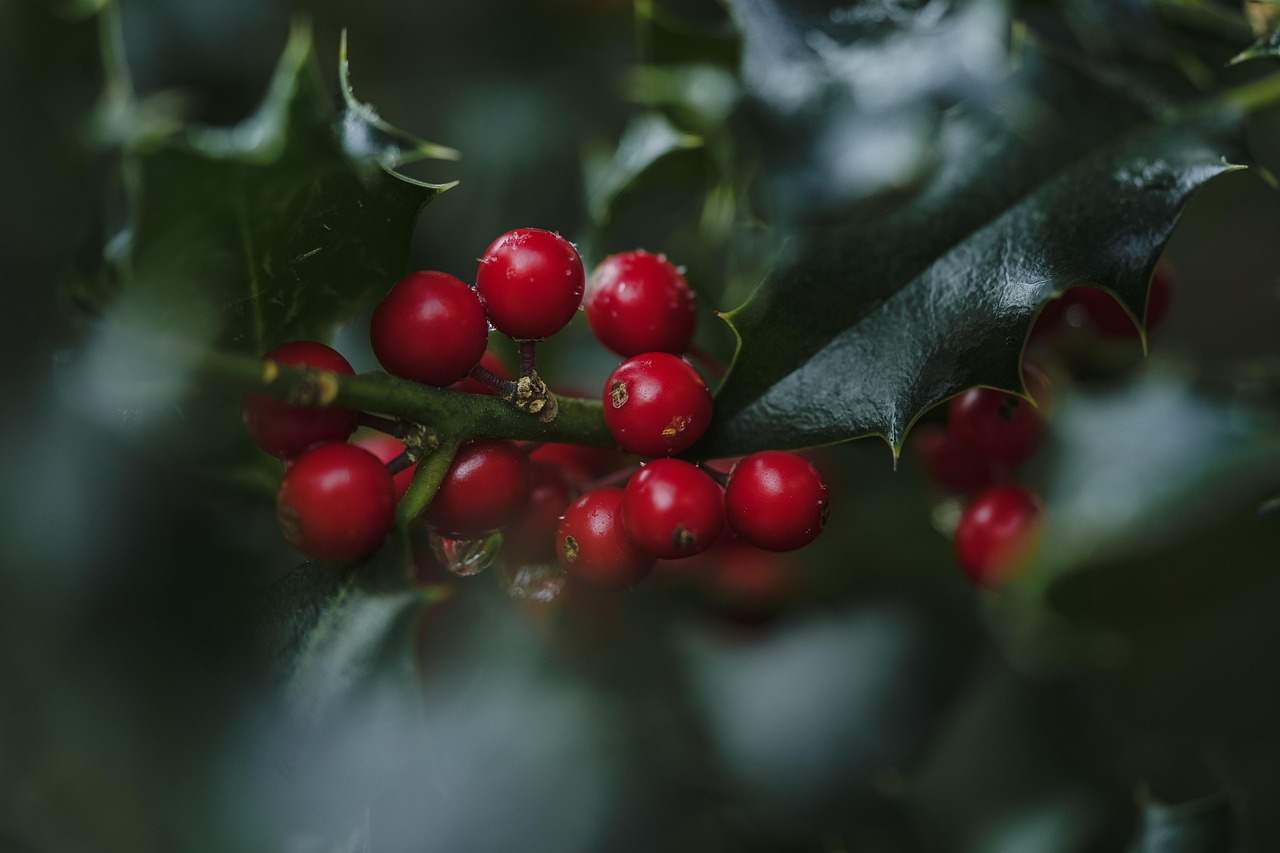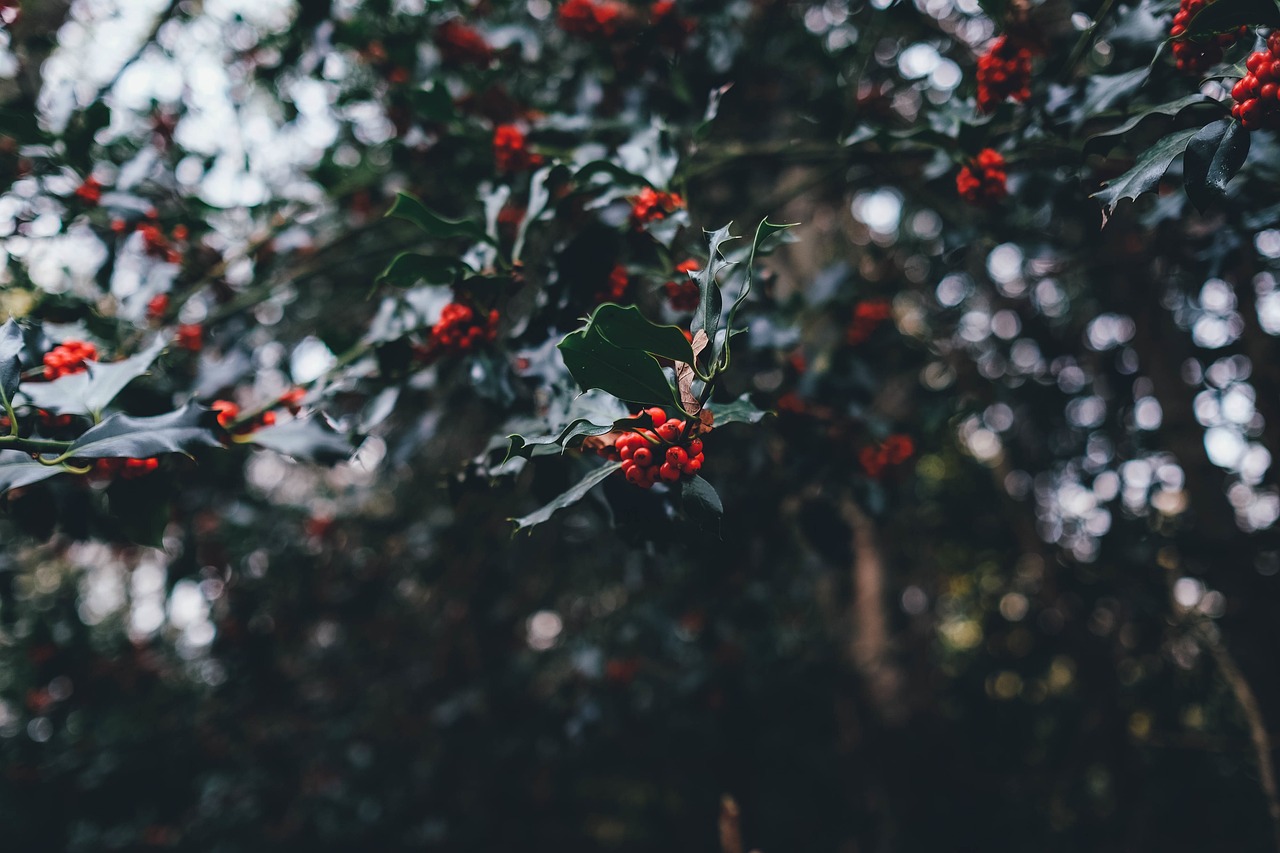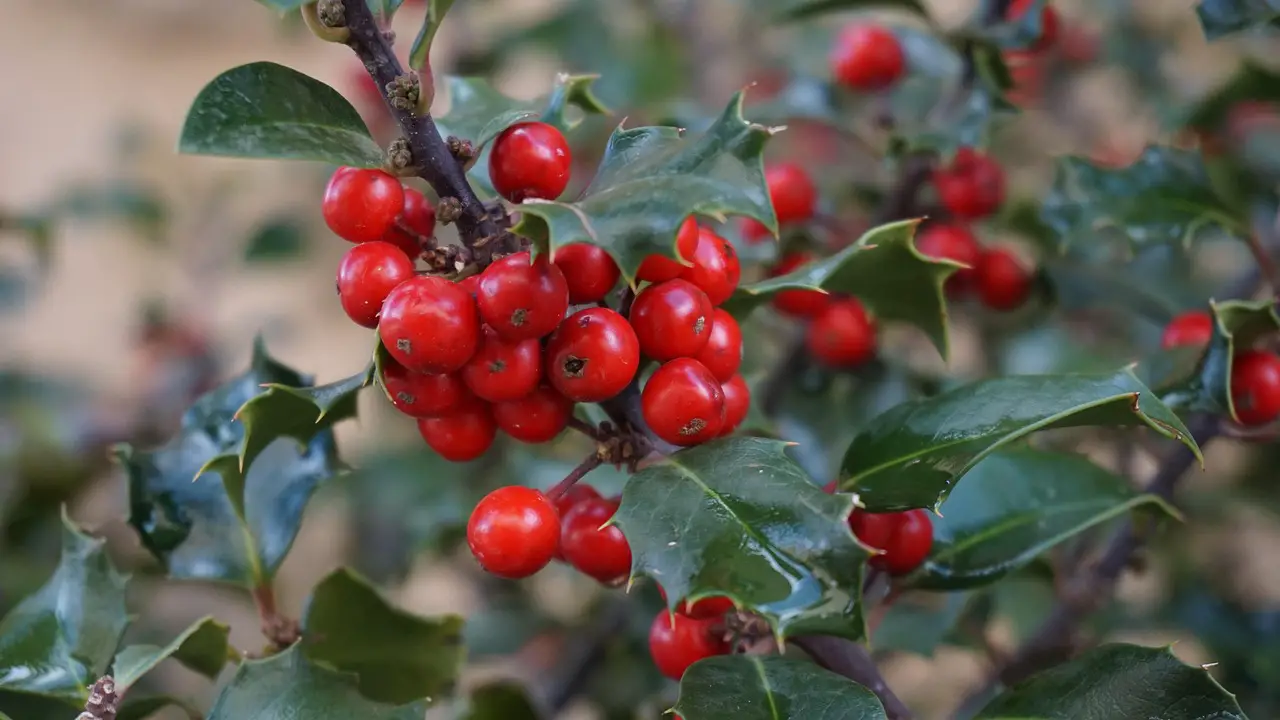The Eagleston Holly tree grows at a moderate rate of about 1 to 2 feet per year, making it an excellent choice for privacy screening. It can reach a height of 15 to 30 feet, depending on the growing conditions and care provided.
The Eagleston Holly (Ilex x attenuata ‘Eagleston’) is a popular choice among homeowners looking to enhance their landscape with natural privacy barriers. This evergreen tree is known for its glossy leaves and beautiful red berries, which provide visual interest throughout the year. Its dense growth habit makes it ideal for creating a natural privacy screen in gardens and yards.

One of the key features of the Eagleston Holly is its adaptability to various soil types and conditions. It thrives in well-drained soils and can tolerate both acidic and alkaline environments. This versatility allows it to be planted in a range of locations, whether in urban settings or more rural landscapes.
Growth Rate and Factors Influencing Growth
The growth rate of the Eagleston Holly can be influenced by several factors, including soil quality, sunlight exposure, and water availability. Here’s a closer look at these factors:
- Soil Quality: Rich, well-draining soil promotes faster growth. Poor soil can hinder development.
- Sunlight Exposure: Eagleston Holly prefers full sun to partial shade. Adequate sunlight boosts growth rates.
- Water Availability: Regular watering is essential, especially during dry spells. However, overwatering should be avoided.
The Eagleston Holly typically reaches its mature height within 10 to 15 years under optimal conditions. This makes it a relatively quick-growing option for those looking to establish privacy quickly. As it matures, its growth may slow down slightly, but it will continue to fill out and thicken over time.

Ideal Planting Conditions
For optimal growth, consider the following conditions when planting Eagleston Holly:
| Condition | Ideal Requirement |
|---|---|
| Sunlight | Full sun to partial shade |
| Soil Type | Well-draining, loamy soil |
| Water | Regular watering; avoid waterlogged soil |
| Spacing | 6 to 10 feet apart for privacy screens |
When planting Eagleston Holly for privacy screening, it’s also essential to consider spacing. Proper spacing allows the trees to grow without overcrowding each other, which can lead to stunted growth and poor health. A distance of 6 to 10 feet apart is recommended, depending on the desired density of the screen.
In addition to proper planting conditions, regular maintenance plays a significant role in the health and growth of Eagleston Holly trees. Pruning is recommended to remove any dead or diseased branches and to encourage a dense growth habit. Fertilizing in early spring can also promote robust growth and vibrant foliage.

Overall, the Eagleston Holly tree serves as an attractive and functional option for those seeking privacy solutions in their landscapes. Its moderate growth rate, coupled with its aesthetic appeal, makes it a favored choice for many gardeners and homeowners alike.
Common Pests and Diseases Affecting Eagleston Holly
While the Eagleston Holly tree is generally hardy and resilient, it can still be susceptible to certain pests and diseases. Recognizing these threats early can help in managing and maintaining the health of your trees. Here are some common pests and diseases that may affect Eagleston Holly:
Pests
- Scale Insects: These pests attach themselves to the leaves and stems, sucking sap from the plant. They can cause yellowing leaves and weaken the tree over time.
- Spider Mites: These tiny arachnids thrive in dry conditions and can create webbing on the leaves. Their feeding can lead to stippling and leaf drop.
- Leaf Miners: The larvae of certain insects burrow into the leaves, creating tunnels. This can reduce the aesthetic appeal of the foliage.
Diseases
- Root Rot: Caused by overwatering or poorly draining soil, root rot can lead to wilting and eventual tree decline. It is crucial to ensure well-drained soil to prevent this disease.
- Leaf Spot: This fungal disease causes dark spots on leaves, which can eventually lead to leaf drop. Maintaining good air circulation can help reduce the risk of leaf spot.
- Powdery Mildew: A fungal issue that appears as white powdery spots, typically in humid conditions. It can hinder photosynthesis and overall plant health.
Regular inspections of your Eagleston Holly trees can help identify these pests and diseases early on. If signs of infestation or disease are noticed, appropriate measures should be taken to treat the issue effectively.

Proper Care and Maintenance Practices
To ensure optimal growth and longevity of Eagleston Holly trees, it is vital to implement proper care and maintenance practices. Here are some essential tips for caring for your holly trees:
Watering
The Eagleston Holly requires consistent moisture, especially during the first few years after planting. However, it is important to avoid overwatering, which can lead to root rot. The following watering tips can help:
- Water deeply but infrequently. Aim for about 1 inch of water per week during dry spells.
- Check soil moisture before watering. The top inch of soil should be dry before additional water is applied.
- A mulch layer can help retain soil moisture and regulate temperature.
Fertilization
Fertilizing Eagleston Holly trees appropriately will promote healthy growth. Here are some guidelines for fertilization:
- Timing: Fertilize in early spring before new growth begins.
- Type: Use a balanced fertilizer, such as a 10-10-10 formula, to provide essential nutrients.
- Application: Follow package instructions for application rates based on the size and age of your trees.
Pruning Techniques
Pruning is essential for maintaining the shape and health of Eagleston Holly trees. Here are some key pruning techniques:
- Timing: Prune in late winter or early spring before new growth emerges.
- Tools: Use sharp, clean pruning shears to make clean cuts.
- Technique: Remove dead or diseased branches first. Then shape the tree by trimming back any overly long or wayward branches to encourage dense growth.
Environmental Considerations
Eagleston Holly trees are well-suited for various environmental conditions, but certain factors can enhance their growth and health. Understanding these environmental considerations is crucial for successful planting:
- Climate: Eagleston Holly thrives in USDA hardiness zones 7 through 9, making it ideal for many regions across the southeastern United States.
- Wind Protection: While these trees are relatively sturdy, planting them in a location that offers some wind protection can reduce stress and damage from strong winds.
- Pest Management: Maintaining healthy trees through proper care will naturally reduce susceptibility to pests. Encouraging beneficial insects can also aid in pest control.
By adhering to these care practices and being mindful of environmental factors, your Eagleston Holly trees will flourish, providing both beauty and privacy for years to come.
Landscape Design Ideas with Eagleston Holly
The Eagleston Holly tree is an excellent choice for landscape design, especially for privacy screening. Its attractive foliage and manageable growth rate make it versatile for various landscaping applications. Below are some creative ideas for incorporating Eagleston Holly into your garden design.
Creating a Natural Privacy Screen
One of the primary uses of Eagleston Holly is to create a natural privacy screen. To achieve this effect, consider the following:
- Planting Density: For a thick privacy screen, plant Eagleston Holly trees closer together, about 6 feet apart. This will allow them to grow into each other and create a solid barrier.
- Height Variation: Mix different heights of hollies to create a more dynamic screen. Taller trees can be placed at the back, with shorter varieties in front.
- Layering: Combine Eagleston Holly with other shrubs or plants to add texture and color. Consider using flowering plants in front of the holly for seasonal interest.
Accent Planting
Eagleston Holly can also serve as an accent plant in your landscape design. Here are some suggestions:
- Entryways: Plant a pair of Eagleston Hollies on either side of your front door or entrance to create a welcoming entryway.
- Garden Borders: Use them to line pathways or garden beds. Their dense foliage will provide a beautiful backdrop for other flowers and plants.
- Mixed Borders: Incorporate Eagleston Holly into mixed shrub borders, combining it with other evergreens and flowering shrubs for year-round interest.
Seasonal Interest with Eagleston Holly
Eagleston Holly trees offer year-round appeal due to their evergreen foliage and seasonal berries. Here’s how they can enhance your landscape throughout the seasons:
Spring
In spring, Eagleston Holly trees produce small white flowers that are not only visually appealing but also attract pollinators like bees and butterflies. The fresh green foliage emerges, providing a vibrant backdrop for spring blooms in surrounding plants.
Summer
During the summer months, the glossy leaves of Eagleston Holly remain lush and green, providing shade and cooling effects in your garden. The dense foliage is also effective for privacy during this time when many people spend more time outdoors.
Fall
As autumn approaches, Eagleston Holly begins to develop bright red berries. These berries not only add a splash of color to your landscape but also serve as a food source for birds and wildlife. The changing colors of nearby trees can further enhance the visual interest of your garden.
Winter
In winter, the Eagleston Holly retains its foliage, providing structure and beauty in the cold months. The red berries stand out against the green leaves, creating a stunning contrast that can brighten up the landscape during dreary winter days.
Environmental Benefits of Eagleston Holly
Beyond aesthetic appeal, Eagleston Holly trees offer several environmental benefits that contribute to a healthier landscape:
- Air Quality Improvement: As with all trees, Eagleston Hollies help improve air quality by absorbing carbon dioxide and releasing oxygen.
- Erosion Control: Their extensive root systems help stabilize soil and prevent erosion, making them suitable for planting on slopes or near water features.
- Biodiversity Support: The berries provide food for various bird species, while the tree itself offers shelter and nesting sites.
Incorporating Eagleston Holly into your landscaping not only enhances privacy but also contributes positively to the environment, making it a responsible choice for eco-conscious gardeners.
Choosing the Right Location for Planting
Selecting the right location for planting Eagleston Holly is crucial for its growth and success. Here are some key considerations:
- Sunlight Requirements: Eagleston Holly thrives in full sun to partial shade. Ensure that the chosen site receives at least 6 hours of sunlight daily.
- Soil Conditions: Well-draining soil is essential. Conduct a soil test if necessary to ensure pH levels and nutrient content are appropriate.
- Space Availability: Consider the mature size of the tree when choosing a location. Make sure there is ample space for it to grow without obstruction from buildings or other trees.
The right planting location can significantly influence how well your Eagleston Holly trees thrive, so take time to evaluate these factors before planting.
Additional Considerations for Eagleston Holly Care
In addition to the previously discussed factors, there are several other considerations that can enhance the health and growth of Eagleston Holly trees. These include mulching, winter protection, and monitoring for potential issues.
Mulching
Applying a layer of mulch around the base of Eagleston Holly trees can provide multiple benefits:
- Moisture Retention: Mulch helps retain soil moisture, reducing the frequency of watering needed during dry spells.
- Weed Suppression: A good layer of mulch can prevent weeds from growing, which can compete for nutrients and water.
- Temperature Regulation: Mulch acts as an insulator, helping to protect roots from extreme temperature fluctuations.
Organic mulches, such as wood chips or bark, are recommended as they decompose over time, enriching the soil.
Winter Protection
While Eagleston Holly is relatively hardy, young trees may benefit from some winter protection. Here are a few strategies:
- Wrap Young Trees: Use burlap to wrap young trees during the coldest months to protect them from harsh winds and freezing temperatures.
- Provide Ground Cover: Adding a layer of mulch around the base can protect roots from frost heaves.
- Avoid Salt Damage: If you live in areas where roads are salted in winter, consider placing barriers to protect your hollies from salt spray.
Monitoring for Issues
Regularly checking your Eagleston Holly for signs of pests or disease is crucial for maintaining its health. Look for:
- Discoloration: Yellowing leaves can indicate nutrient deficiencies or overwatering.
- Pest Damage: Check for signs of pests, such as webbing or visible insects on the leaves and stems.
- Mold or Fungal Growth: Look for unusual spots or growths on leaves that could indicate disease.
If any issues are detected, consult with a local extension service or garden center for treatment options suitable for Eagleston Holly.
Final Thoughts
The Eagleston Holly tree is an exceptional choice for enhancing privacy in your landscape while providing aesthetic and environmental benefits. With its moderate growth rate, evergreen foliage, and seasonal interest, it stands out as a favorite among gardeners and landscapers alike.
By considering essential factors such as planting location, care practices, and ongoing maintenance, you can ensure that your Eagleston Holly trees thrive. Regular checks for pests and diseases, along with appropriate winter protection measures, will further contribute to their longevity and robustness.
Ultimately, incorporating Eagleston Holly into your garden not only creates a beautiful privacy screen but also supports local wildlife and contributes positively to the ecosystem. By choosing this versatile tree, you are making a lasting investment in your landscape that offers both functional and aesthetic rewards for years to come.
Whether you are a seasoned gardener or a novice, understanding the growth rate and care requirements of Eagleston Holly will empower you to create a thriving outdoor space that enhances your home’s beauty and privacy.
